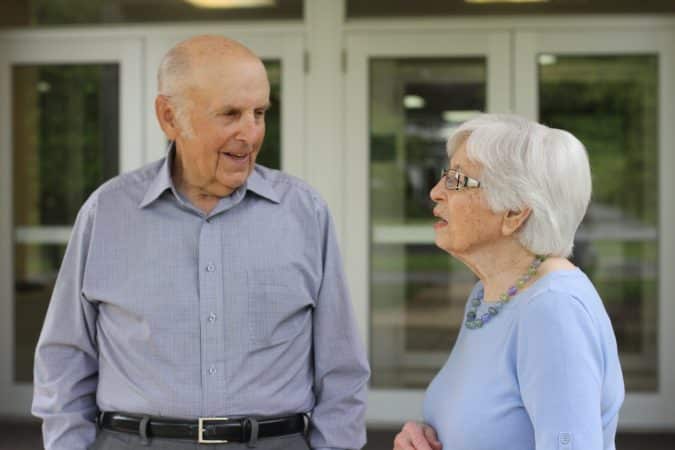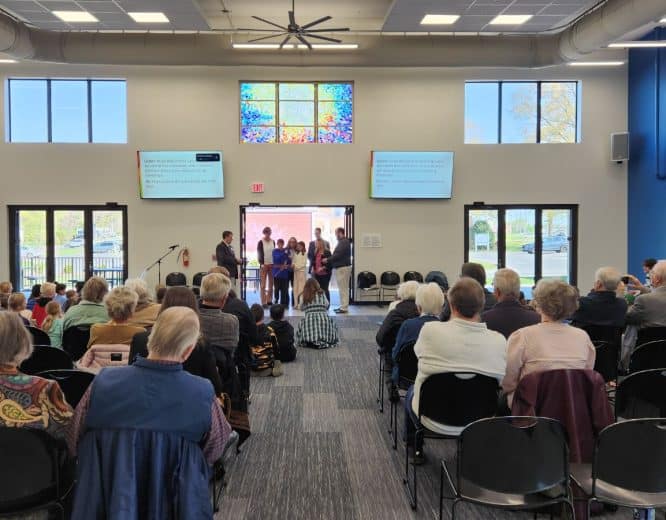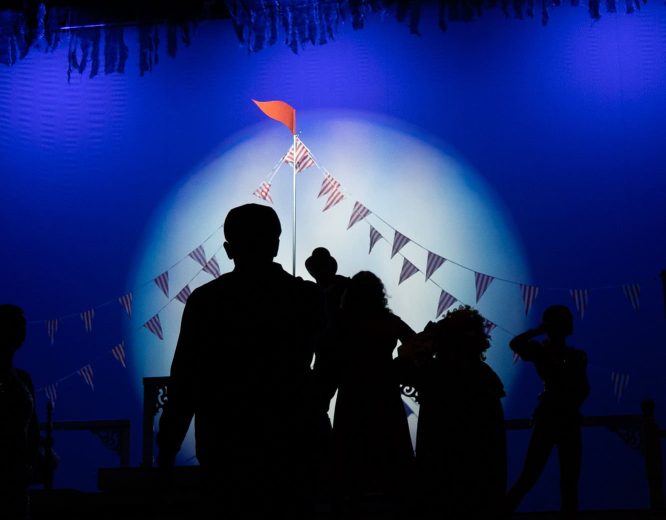Eastern Mennonite High School Moved Toward Independence, 1964-1982

This blog post written by Elwood Yoder was first published on May 25, 2019 on his blog.
In 1952, Samuel O. Weaver’s high school English teacher insisted that he learn how to diagram a sentence. Sam saw no need to learn how to diagram a sentence, and he told A. Grace Wenger, his EMS teacher, that he intended to return to Newport News and milk cows for his brother. She replied to Sam that he didn’t know where the Lord would call him and that he should learn how to diagram a sentence. Sam graduated from high school, college, and earned a Master’s Degree, though sixty-seven years later, in a 2019 interview, Sam laughed and admitted that he still does not know how to diagram a sentence!
In spite of not being able to diagram a sentence, God used Sam in a mighty way during his twelve years as principal of EMHS, 1969-1981. A. Grace Wenger was right—Sam didn’t know where God would lead him or in what capacity he would serve the church. It was in the late 1960s that Sam was called to lead Eastern Mennonite High School as it sought to become independent from Eastern Mennonite College.
Dr. Myron Augsburger, President of EMC, needed a high school principal with financial and marketing skills. So he hired Sam Weaver to head the high school in 1969. To lead the high school, Sam needed training in education, and he enrolled in a Master’s program at James Madison University. In the meantime, Weaver relied on dependable teachers already working at EMHS, like James Rush, David Mumaw, Lois Janzen, Harvey Yoder, Marvin Miller, Ron Koppenhaver, Gloria Lehman, Esther Augsburger, Sam Strong, and Vivian Beachy. In 1977, Sam hired Ernest Martin to develop the academic program at the school. Knowing little about academics, Sam acknowledges that “Ernie saved my hide,” by establishing increased trust and reputation in the community for curriculum at the high school.
In the fifteen-year process of creating an independent high school, Dorothy Shank ably chaired the EMHS Board, 1974-1981. In an era when few women served as leaders in the Mennonite church, Dorothy prayed about the decision, and then said she would help the school as the first woman chair of the Board. It was Dorothy, in an interview, who stated that we all stand on someone else’s shoulders and that it is important to recognize God’s faithfulness in launching a strong and independent EMHS in the 1970s.
Eastern Mennonite School began as a high school in 1917, but it soon added junior college classes. When the junior college grew into a four-year program and earned accreditation in 1947, it created an identity problem for the high school. By the early 1960s, with enrollment growth in the college, visionaries in Virginia Mennonite Conference got busy and built a separate building for the high school in Park View, first used in 1964. Over Christmas break in 1963-1964, students and teachers picked up books from the college library and moved them to the new high school campus nearby on Parkwood Drive.
A few years after the high school moved into its new building, the EMC Board wanted the high school division to support itself, and according to the college’s business office, EMHS was operating at a deficit. In 1967, according to EMC accounting methods, the high school deficit was over $69,000. The Executive Committee of the EMC Trustees, which presided over the high school, asked the high school to balance its budget within five years. With Sam Weaver at the helm of the high school, the school reached a balanced budget by 1973. While Sam was the Principal, he gives credit to people like Daniel Bender, Dwight Wyse, Shirley J. Yoder, and Glendon Blosser for helping to set the financial ship of the school in good standing.
The years of Sam Weaver’s leadership at EMHS, 1969-1981, were tumultuous years in the United States, with the Vietnam War, an era of rebellion and protest for youth, and rising inflation driven by rising oil prices. Still, students kept coming to EMHS, from as far away as Pigeon, Michigan, Sarasota, Florida, the Tidewater region of Virginia, and northeast Ohio. By 1977 the high school had 277 students, with a waiting list. Sam’s Christian education philosophy relies on ownership of a student’s education from the home, the church, and the Christian school. Students tested Sam’s leadership, to be sure, but the school grew in many ways and earned its charter in 1982.
Dorothy Shank remembers that during her tenure as Board Chair in the late 1970s she worried when good teachers left EMHS for other positions. She prayed God would send the school good replacement teachers. She especially worried when Marvin Miller, an outstanding music teacher, 1966-1981, left EMHS. “But,” Dorothy rejoiced in the interview, “God brought in Jay Hartzler,” another exceptional music teacher.
In a 2019 interview with Sam Weaver and Dorothy Shank, they noted the excellent support for the high school from Virginia Mennonite Conference churches in the 1970s. Sam visited Districts and churches and encouraged support. Consequently, churches in Virginia Conference stepped up and supported their high school, through a Congregational Aid Plan formulated by Glendon Blosser. Sam notes the way Conference Districts sent delegates to the Board meetings, like Robert Mast from Chesapeake, Va., and Ike Oberholtzer from Newport News. In return, the EMHS Touring Choir began a spring circuit of singing in many of the supporting churches, leading them in worship and song.
Programs and buildings seemed to spring up in the 1970s, attracting many students to attend. The school built a new fine arts addition in 1972, and while Dorothy Shank served as Board Chair, the school added a gymnasium, finished in 1976. In Park School, a former public school located next door to the high school that EMHS used as early as the 1960s, the high school set up an Industrial Arts program and Art program. The college set aside rooms for high school students in Maplewood dorm, and to the present has not charged for the use of Lehman Auditorium for the annual high school graduation.
Dorothy Shank remembers that the tone of moving toward separation was tense at times, but by 1982 the two schools went different directions on amicable terms. And Sam Weaver, the balding principal who established the financial and church-based foundations for the school, decided it was time for him to move on. In 2019, an EMHS faculty member publicly recognized Sam at the annual National Honor Society Induction, when his granddaughter, Julie Weaver, joined the society. As Principal during the 1970s, Sam had signed all of the Honor Society documents.
It is not by our power, as Dorothy asserted, but by God’s grace and faithfulness, that EMHS moved toward independence from the college in the 1970s. There had been those at the college who entertained ideas on what to do with the building should the program be discontinued. With good leadership, EMHS became a viable church school, a process that began in the 1960s and culminated with a charter in 1982.



